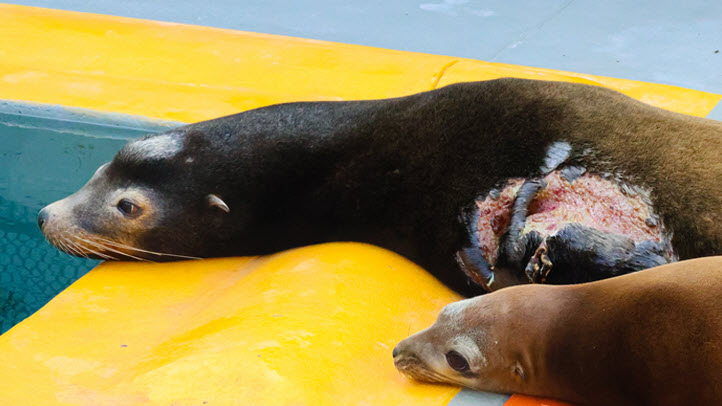
A bloom of toxic algae across the Southern California Coast may be responsible for the deaths and illness of hundreds of sea lions and dolphins.
The Channel Islands Marine and Wildlife Institute received more than 1,000 reports of marine mammals that were sick or dead from June 8 to June 14.
"We are managing more than 200 reports of marine mammals in distress each day," said Ruth Dover, co-founder and managing director of the Institute. "We are doing the best we can to keep up with the intense pace. Please continue to report all sick and injured marine mammals as we are getting to as many animals as we can, as quickly as we can, each day."
Get Southern California news, weather forecasts and entertainment stories to your inbox. Sign up for NBC LA newsletters.
The algae Pseudo-nitzschia produces the neurotoxin domoic acid, that when ingested by the wildlife can be fatal. Domoic acid is usually consumed by marine mammals through prey that may contain high levels of the algae like fish.
According to the National Oceanic Atmospheric Administration (NOAA), domoic acid is one the largest threats to marine mammals.
Mammals who consume the neurotoxin are likely to suffer from seizures and brain damage. Many of the dolphins that are deceased were found stranded on the beach shore, which can be a sign of disorientation or stress in the animal.
Officials from the NOAA CoastWatch show a bloom of domoic acid from Orange County to San Luis Obispo. There are particularly high concentrations of the algae near Santa Barbara and Ventura counties.
It is recommended that people and their pets stay clear of the stranded marine wildlife as it can be harmful to other animals. The neurotoxin is only harmful to humans if consumed through contaminated food causing amnesic shellfish poisoning.
Domoic acid is not uncommon in certain areas of the California coast, however, under certain ocean conditions can spread more rapidly. Last year the spread of domoic acid was mostly affecting the sea lion’s population closer to the shore. With more sick dolphins being reported, this may show that there are high concentrations of the algae in the offshore as well.
Samples of the deceased animals have been collected throughout the process to confirm the presence of the neurotoxin. These samples can help scientists understand patterns in the spreading of the toxin as well as any other issues that may play a role.



